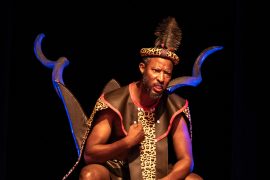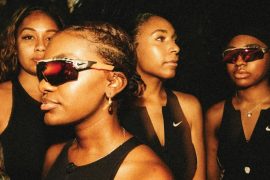 Five years ago, when I started my “going natural” journey, I was lost in a sea of options. I stuck to products I knew and that were familiar to me. My general rule of thumb was to stick to brands that had models that reflected my African identity.
Five years ago, when I started my “going natural” journey, I was lost in a sea of options. I stuck to products I knew and that were familiar to me. My general rule of thumb was to stick to brands that had models that reflected my African identity.
One morning, as I was looking through Vogue magazine, I saw an advert that stole my attention. It was a Paul Mitchell advert. I’d never heard of them until then. To make matters worse, the advert was not directed at me as the model was blond. I ignored the packaging and decided to order the products online.
A few Amazon clicks later, my shipment was on its way. When it finally arrived, four weeks later, I was elated.
The products were amazing. Within a few weeks my hair was silkier and started growing long. That was the start of my journey into the world of professional haircare products.
I discovered that there was a difference between professional haircare and other haircare products. The price is the first indicator of the quality of the product as it usually reflects the technology. I also discovered to cater to the type of hair you have and its specific challenges.
In this issue, we look at the various types of curly hair and their challenges.
CURLY HAIR TYPES
2a
Type 2A may be described as fine or thin with a wave. This type is loose, with an “S” shaped pattern, and is on the thinner side. It is usually very easy to manage and style.
Tip: This hair is pretty easy to manage. The challenge is often that it is fine in texture. To give it the appearance of more volume, a shoulder length cut adds volume to already thin hair. Products that add volume are also the way to go.
2b
This hair has a more prominent “S” shaped pattern. These “beachy” curls are usually envied as they are easy to style and look good without much effort.
Tip: The medium waves and thickness of hair looks great worn loose. Products that can help hold the curl are ideal as they enhance the look of gorgeous curls.
2c
This type of hair is wavy with a very distinct “S” shaped pattern, and is borderline curly at some points. This hair type tends to be frizzier and thicker.
Tip: Styling products with a firm or strong hold are ideal as hair tends to be more prone to frizz. Styling gels and pomades will help soften and even out the waves so they look more natural.
3a hair
This hair has well defined loopy curls. It may be prone to frizz, so it is best to use lightweight products that will give you a nice hold.
Tip: To avoid dryness, try skipping shampoos on some days and cleansing your hair with conditioner only. Smoothing shampoos and conditioners to help reduces frizz are recommended. These also help reduce the need for heat styling that usually leads to heat damage.
3b hair
This hair’s curls are well defined with less space between each bend and curve than 3a hair. The texture may be coarse and dense.
Tip: This hair is usually slatthered in products to combat frizz. Use lightweight products that are sulfate and silicone free to prevent product buildup.
3c hair
This hair has a defined corkscrew shape and has small spaces between the bends in the hair strand.
Tip: Avoid heat use when possible by using stretching techniques instead. Cleanse and deep condition weekly and moisturize often with light gels.
4a hair
This type of hair has a defined curl pattern almost like an “s” shape. It retains moisture fairly well, but as with most curly hair types can still be prone to dryness.
Tip: Gentle sulfate-free shampoos, conditioners and rich creamy products will help keep hair moisturized. Invest in a curl defining range that is moisturizing on curls and helps define your curls.
4b hair
This type of hair has a “z” shape pattern and has a more fluffy cottony appearance. Due to the bends and curves in the hair strand it is susceptible to dryness and breakage. This hair type shrinks up to 70% so without stretching out the hair it will appear shorter than it actually is.
Tip: A lot of moisture, gentle cleansers and frequent deep conditioning is be helpful. Shampoos and conditioners infused with oils are critical to lock in much needed moisture. Use deep conditioning treatments weekly.
4c hair
This type of hair looks similar to 4b hair type only it is more tightly coiled. In its raw state (no products added and freshly washed) it does not have a defined curl pattern.
Tip: This is the most fragile hair type. Similar to 4b type hair, this type needs a lot of moisture and a lot of oils as it is extremely dry. A great trick is also to add natural keratins to put moisture back into dehydrated hair. Avoid harsh chemicals as they only weaken the hair further.
Follow me on Instagram for regular tips.
To pose beauty questions email twincarenamibia@gmail.com
sources:
*Images: Pinterest




